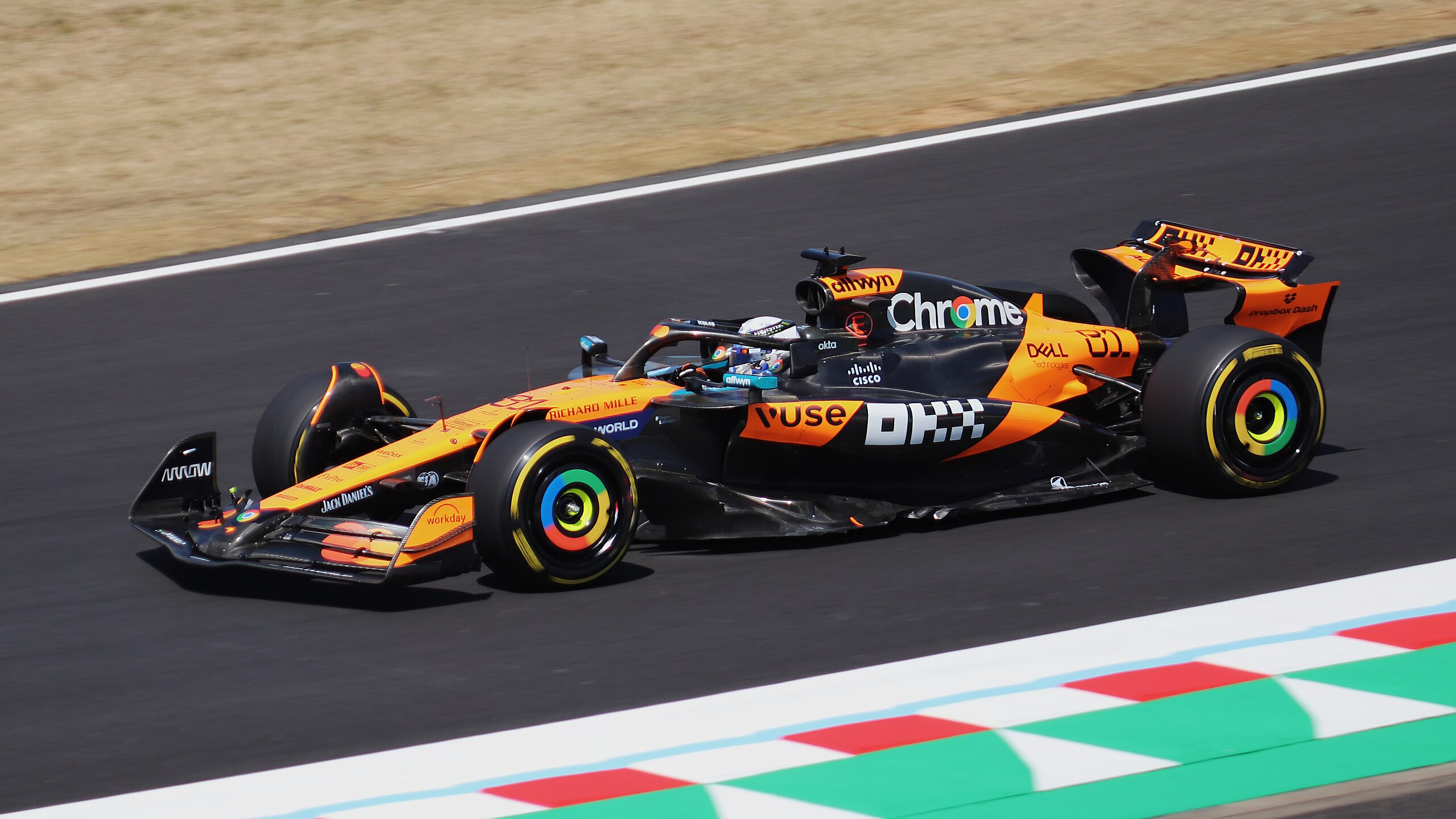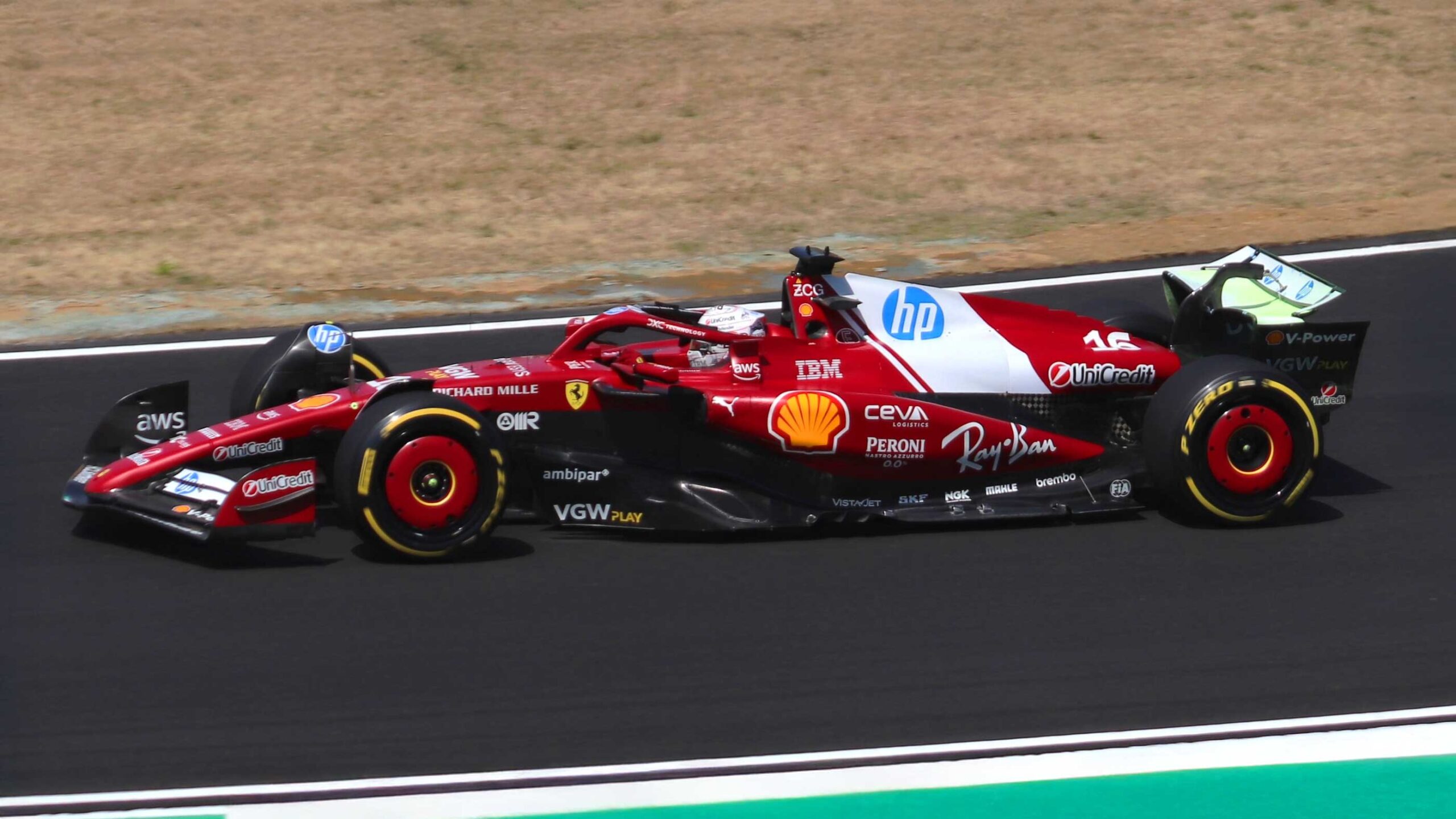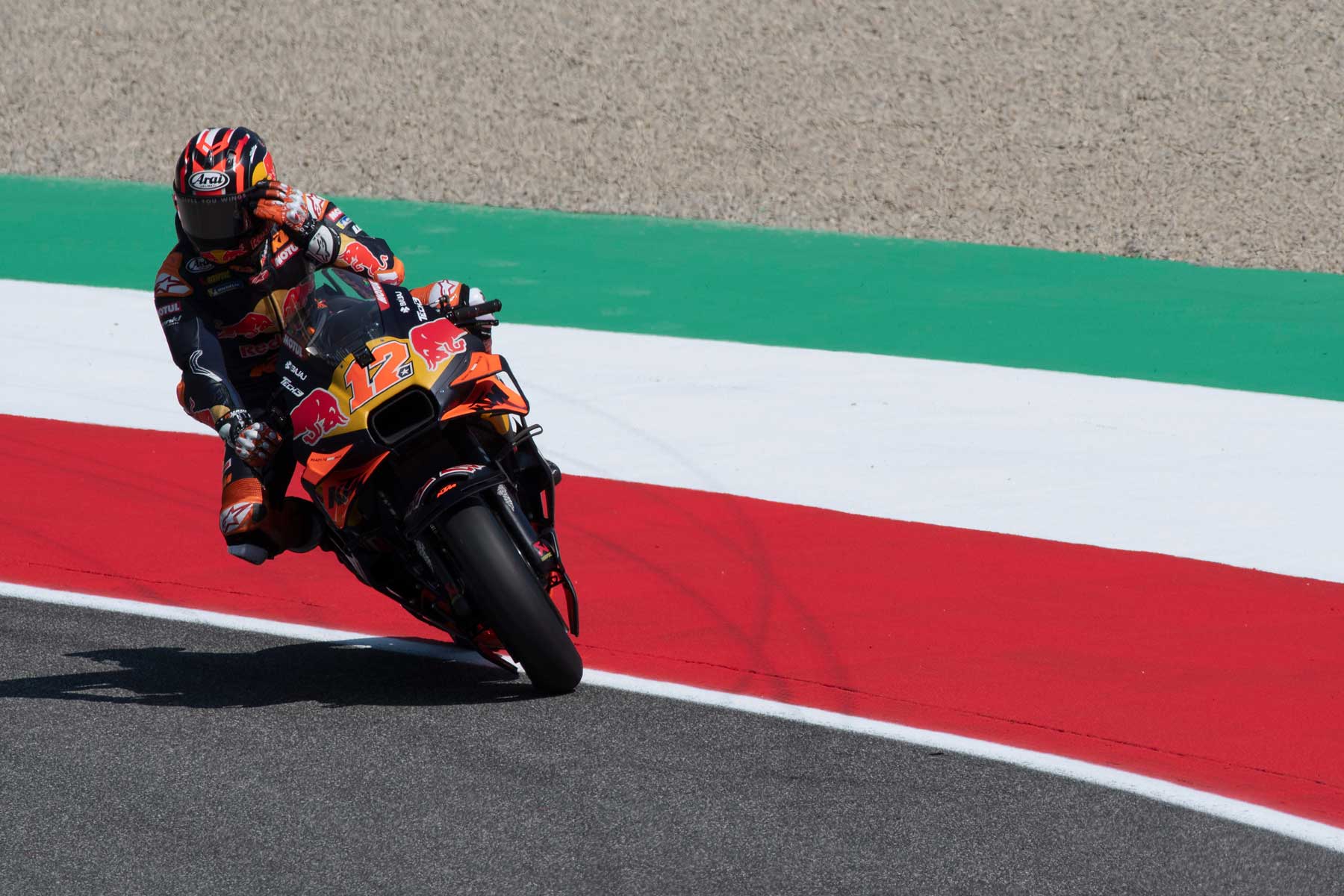Are you willing to sponsor?
Are you ready to explore the transformative power of athlete sponsorship for your brand? Click here to learn more about how sponsorship can help brands grow and thrive in the exciting world of motorsports.
By Emanuele Venturoli| Posted June 17, 2022 | In Formula1
The success, recent and past, of Formula 1 has much to do with the appeal of single-seaters and those who drive them. Since time immemorial, these extraordinary technical marvels (and their intrepid leaders) have occupied a prime place in the dreams and fantasies of young and old lovers of speed, engines and all things automotive. It is no coincidence that one of the first adjectives attached to the Circus is“aspirational”-Ferrari, for example, is not considered just a team. “Everyone cheers Ferrari,” to quote four-time world champion Sebastian Vettel.
In this spectacular imagery, well represented by a large copy of posters, figurines, calendars and newspaper pages occupy a special place the trails of sparks that Formula 1 cars leave as they pass by. These glowing tongues that arise from underneath the cars and contribute to the great “aesthetic” appeal of the discipline, actually have a number of reasons-someengineering, some regulatory-that underlie their presence.
As always in the world of Formula 1, nothing happens without a reason. And as much as it may seem like a detail, there is always a story behind every nuance of this incredible sport. In short: there is a definite answer to the question “why do Formula 1s spark?”
As is evident, F1 cars are far removed from ordinary everyday cars. Playing a key role, in addition to engine performance, is the aerodynamic load these cars are able to generate, which allows them extraordinary cornering speeds.
There are many elements that contribute to the aerodynamic load in a Formula 1 car, but in a simplified view, we can say that the main ones are the ailerons and the bottom of the car. It is precisely the latter, thanks to a change in regulations, that has returned to the center of Formula 1’s design interest, due to the reintroduction of the infamous ground effect that has disappeared from the scene for more than twenty years.
It is from the bottom of the car, an area of very high complexity, that the above sparks are generated.
The sparks are caused by the titanium plates that protect the bottom of the car when they rub against the asphalt at high speed. The bottom is composed of a woody material (recognized as Jabroc, to be exact) designed in such a way that it can be both weight-performing and regulation-compliant. In fact, at the end of each race, the bottom is measured to ensure that it has not shrunk more than a millimeter. It is necessary to check that the car does not go too low during the race and that it meets the regulatory parameters. Failure to do so will result in disqualification. Since-unlike wood-the titanium plates that support the bottom do not shrink, the millimeter gap between the bottom and the plates decrees whether or not the set-up is successful in complying with regulations.
The contact of the metal blades with the track creates friction in situations of high aerodynamic load, when the car is “squeezed” to the ground by air pressure.
Throughout the history of F1, this particular “special effect” has been the subject of changes designed to accentuate it even more: in the 2015 season the so-called skidblocks, or “skids” placed on the bottom for the sole purpose of replicating the spectacular light trails of single-seaters from the 1980s and 1990s. Titanium was chosen both for its lightness and strength characteristics and for its spectacularity. F1 in that year realized that those sparks were important to fans, televisions and photographers so technological solutions were adopted to enable them.
The combination of interest chosen by the federation turns out to be interesting: on the one hand for spectacularity and on the other for safety, coming to the happy conclusion that one does not exclude the other. Could they have made a Formula 1 without sparks? Yes. There are technological solutions for which single-seaters could avoid doing them, but a conscious choice has been made that they are good for everyone.
The answer is: exactly the opposite. Titanium plates are used to protect the belly of the car from any debris on the track that could damage the internal mechanical parts.
However, with the reintroduction in the 2022 season of the flat bottom with Venturi channels and the aforementioned ground effect, the stables have had to (and still have to) deal with porpoising and bouncing. What are they?
The last time a Formula 1 car took advantage of ground effect was 1983. Air flows are directed under the single-seater, thanks to Venturi channels, to create downforce and crush the car to the ground at high speeds. The famous porpoising occurs when there is no longer any space between the bottom of the car and the asphalt, and the new air pressure zone causes the car to rise. At that point, the Venturi channels intervene again, bringing the machine back to earth (we don’t begrudge more technical readers for these “light” explanations from a scientific point of view). This up-and-down effect benefits neither the car, putting great stress on suspension and chassis, nor the driver
Bouncing, literally translated as “hopping,” is often juxtaposed with porpoising even though it has some different characteristics. In this case, the effect is more likely to occur on tracks that are not particularly flat with many areas that can be defined as “wavy” (such as the case in Baku). The FIA has commented on this, deciding to take steps to protect the health of the drivers. These two effects create some driving discomfort, affecting the athlete’s physical state (as happened mainly to 7-time world champion Lewis Hamilton throughout the first part of the 2022 Formula 1 season).
As already mentioned, the relationship between spectacle and safety finds success in most of the technological solutions adopted in the top four-wheel racing championship. Just think of the lives saved by the introduction of the HALO – to protect the cockpit – to the more adrenaline-fueled DRS (drag reduction system) to increase the number and chances of overtaking during the arc of the race. Innovation has also carved out its space with the hybrid era, and the introduction of theERS (energy recovery system), combined with the performance of the heat engine, is proof of this.
Do you want to learn more about Formula 1? Please feel free to contact us and follow us on our social media.
Are you ready to explore the transformative power of athlete sponsorship for your brand? Click here to learn more about how sponsorship can help brands grow and thrive in the exciting world of motorsports.

A graduate in Public, Social and Political Communication from the University of Bologna, he has always been passionate about marketing, design and sport.
The online platform where you can discover the latest trends, strategies and insights from the exciting world of sports marketing.
View our blog
July 1, 2025
In the complex and exciting world of Formula 1, performance no longer belongs exclusively to wind tunnels and race strategies. It also unfolds in boardrooms, brand labs, and experiential mark[...]
Read More
June 11, 2025
The 2026 calendar of the Formula 1, officially announced on June 10, 2025, includes a season of 24 Grands Prix that will cross five continents and introduce new venues, logistical variations [...]
Read More
June 4, 2025
When Liberty Media acquired Formula 1 in 2017, revenue from sponsorship of the championship was around $272 million. Eight years later, that figure seems like an echo of a bygone era. By 2025[...]
Read MoreIn an era where it is possible to get anywhere with a click, there is a strong temptation to approach teams and properties directly for sponsorship projects.
By doing so, we are convinced that we are shortening the value chain, saving time and money. However, these DYI methods are anything but risk-free and what initially appears to be a competitive advantage soon turns into a problem that is difficult to resolve. That’s why there are agencies. And this is why you should rely on us for your sponsorships.
When first approaching a sponsorship or sports marketing project, it is difficult to know immediately which stakeholders are correct, what the decision flow is, and what the right timelines are for each process. Sports is a very specialized field of action, and fitting effectively into its paths can take a lot of time and therefore money. We, on the other hand, know referents and spheres of action and know who to talk to, when and how. So you are also more effective.
Sports is an immense passion, and for our heart colors we would be willing to do anything. But business is a different business, and it is important to make the best possible strategic decisions based on independent research, statistics and reliable data. A sports marketing and sports sponsorship agency like RTR has an objective, 360-degree picture of the scenario and can tell you what is really best for you: which sport, which athlete, which team. This is because we possess a great deal of data and information on ratings, segmentation and attitudes. Because the numbers don’t lie. Never.
Activations are the real heart of sports sponsorship. Without them, there remains only a blank sticker on a motorcycle, car or uniform and no contact with the public, no emotional connection, no impact on the bottom line. Then how do you do it? It certainly won’t be the teams or the athletes who will help you leverage sponsorship and enjoy the many marketing rights you have paid for. To bring out the best in a sports marketing project you need an agency that knows how to use sponsorship to engage the fanbase on the Web, to reach out to Shopping Centers, to organize hospitality, to develop B2B and B2C opportunities, and to get “your” athletes in front of millions of potential consumers.
Would you ever go to the dealer who sold you the car and ask if the competitor’s car is better? No, of course. So, how do you expect to get firm measurements of the effectiveness of your sponsorship if you do not rely on someone super partes? At RTR, we have always worked with independent third-party agencies that allow us to know the return on any exposure of your brand on TV and in the media. In addition, we believe in calculating ROI as the ultimate measure of your success-so we can tell you for every penny you spend how much you are making.
We have been involved in sports sponsorship and sports marketing for more than 15 years. We are consultants in the sense that our goal is to maximize your investment, but we are also an agency that manages the project from start to finish. We have been doing this since 1995 with passion and professionalism, following three principles that have become cornerstones of our business: independence, verticality and transparency.
I would like to highlight the fact that one of the qualities of RTR is its great ability to approach the sponsorship scenario strategically, together with its passionate attitude, its amazing enthusiasm for solving problems, and its high level of professionalism.
Gianluca Degliesposti
Executive Director Server&Storage EMEA
Eurosport is truly delighted with its business relationship with Riccardo Tafà, who has become extremely popular, thanks to his detailed knowledge of the sports marketing sector and his highly diligent attitude to work.
Francois Ribeiro
Commercial Director
Passion and Expertise are the features that I have found in RTR since the very beginning. Serious and reliable professionals but also very helpful, nice and open-mind people, willing to listen and compare different ideas. All the values in which RTR believes make this agency a partner, not just a supplier, a partner with whom we have had the opportunity to achieve significant commercial results in term of success and image.
Luca Pacitto
Head of Communication
We have been working with RTR Sports Marketing for over 10 years. The objectives and the programmes of collaboration continue to be renewed and to grow with mutual satisfaction. I believe RTR is a team of great professionals led by Riccardo Tafà, who I consider a manager of exceptional skills and with a great passion for his work.
Lucio Cecchinello
Team Principal
I have known and worked with Riccardo Tafà since 1995 when we collaborated for the first time on a project for the Williams Formula 1 team. Several clients followed. After leaving Williams to work for Gerhard Berger then owner of the Toro Rosso F1 Team, I turned again to Riccardo to seek his help in finding a tool supplier for the team and Riccardo duly obliged with an introduction to USAG, a partnership with Toro Rosso which endured for five years. I recently started a new role as Group Commercial Director for the renowned Andretti Autosport organisation and I find myself working with Riccardo once again on a number of interesting projects. Why has this relationship with Riccardo endured ? He’s smart, knows the commercial side of sport inside out and back to front and he’s honest and trustworthy. Riccardo Tafà is a “doer” not a “talker”: in over 20 years I have never had a dispute either with him or with a company that he has introduced and each partnership introduced by Riccardo has delivered quantifiable ROI to rights holder and sponsor alike. I can think of no better testimonial of Riccardo’s diligence, knowledge, contact base and hard work than that.
Jim Wright
Group Commercial Director
The online platform where you can discover the latest trends, strategies and insights from the exciting world of sports marketing.
View our blog
July 1, 2025
In the complex and exciting world of Formula 1, performance no longer belongs exclusively to wind tunnels and race strategies. It also unfolds in boardrooms, brand labs, and experiential mark[...]
Read More
June 26, 2025
The European Commission has provided Liberty Media Corporation with unconditional approval to complete the acquisition of the MotoGP World Championship. The process of annexing the top motorc[...]
Read More
June 18, 2025
When you think of sports, what comes to mind? For many, the answer is sports marketing management. We see Super Bowl or Olympic commercials and it seems like every other product is marketed t[...]
Read More